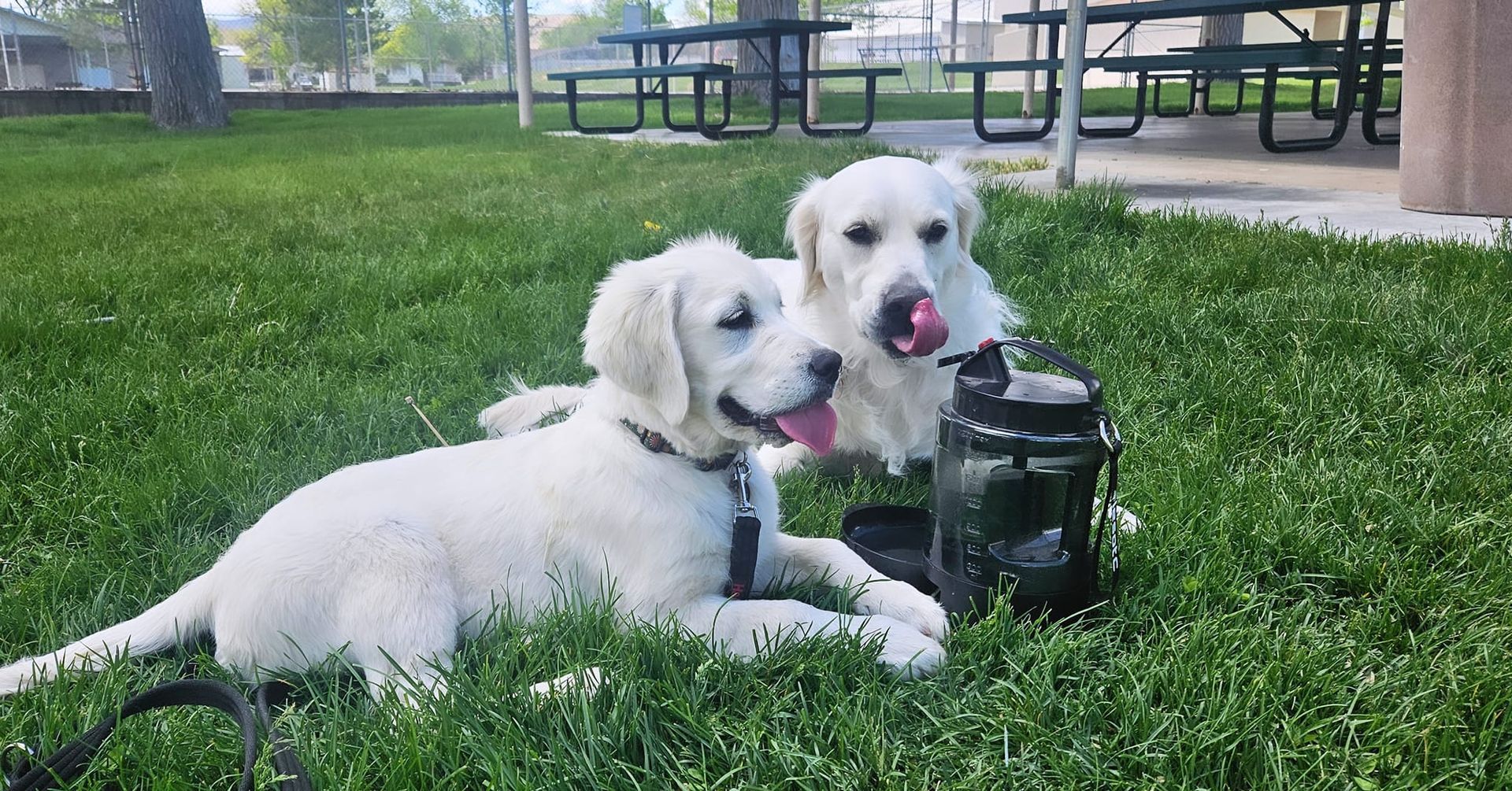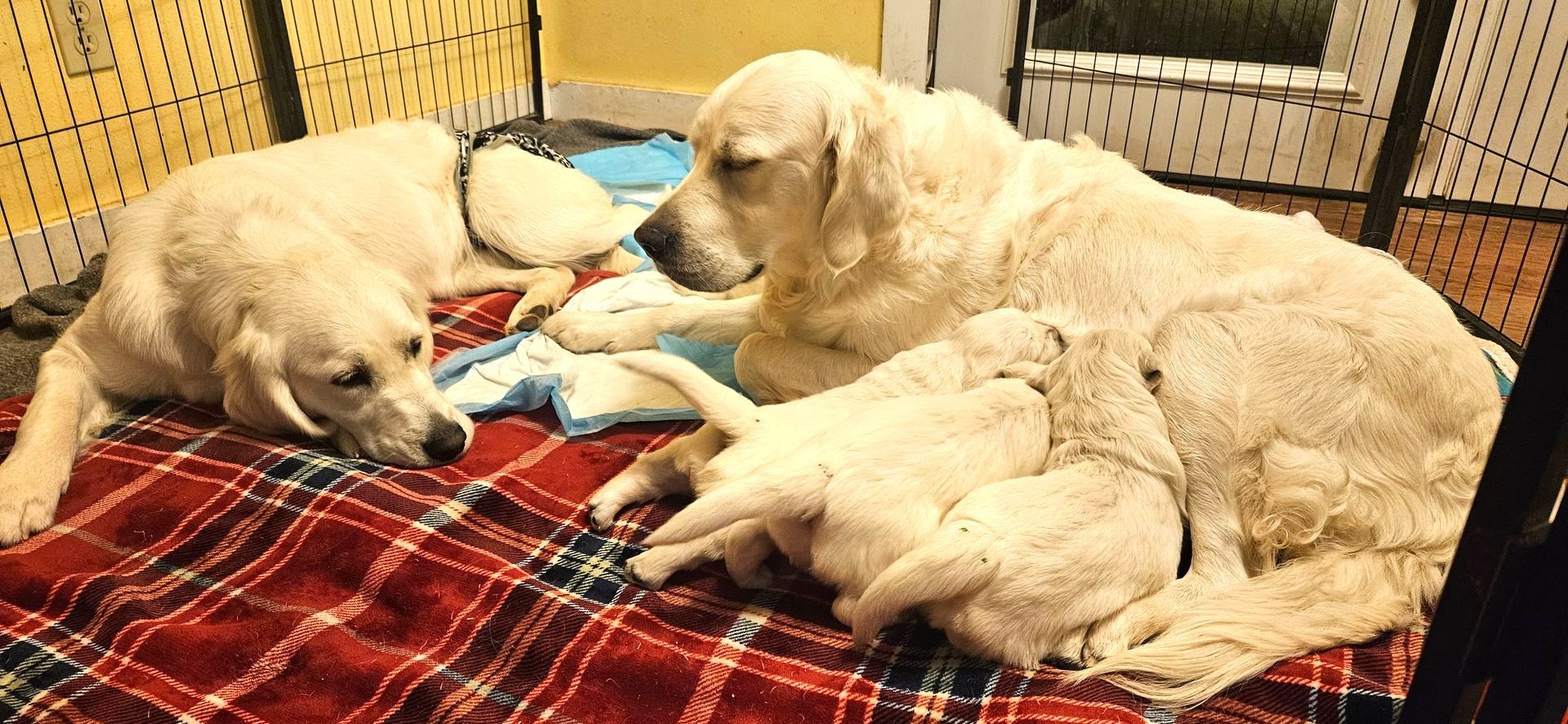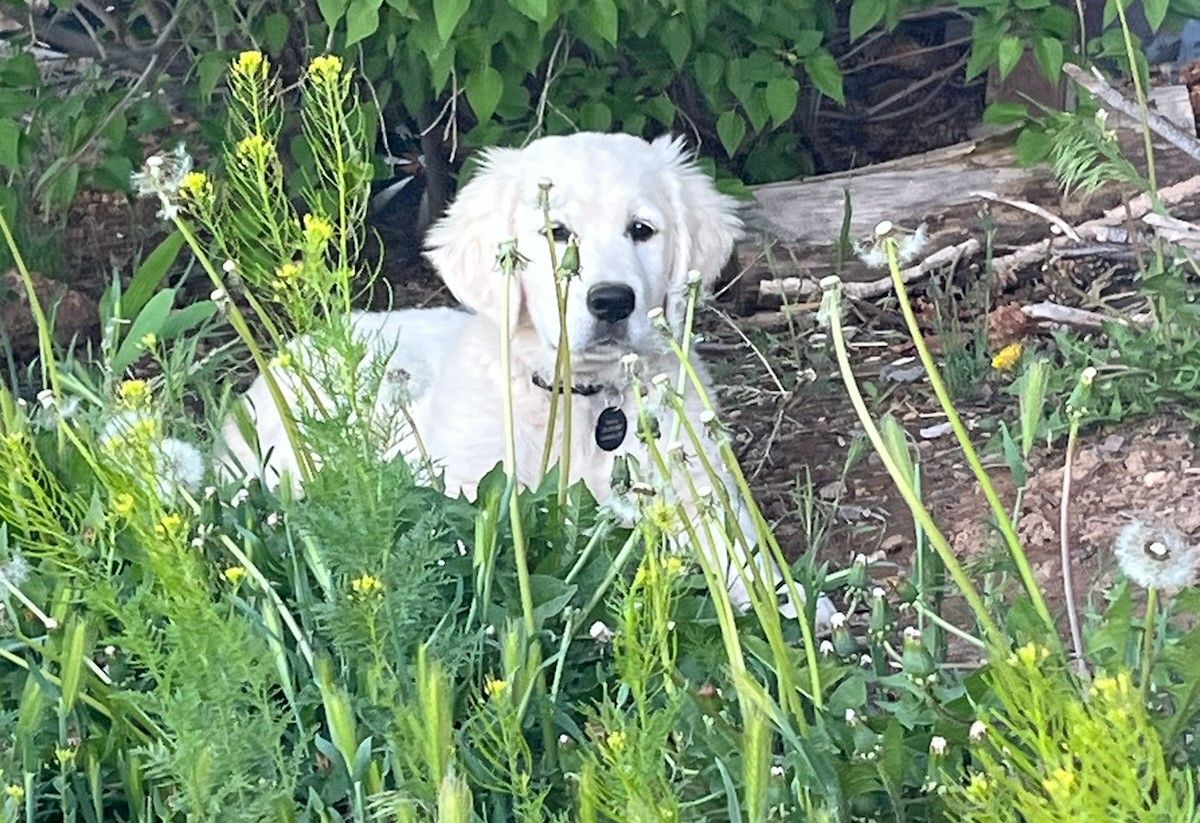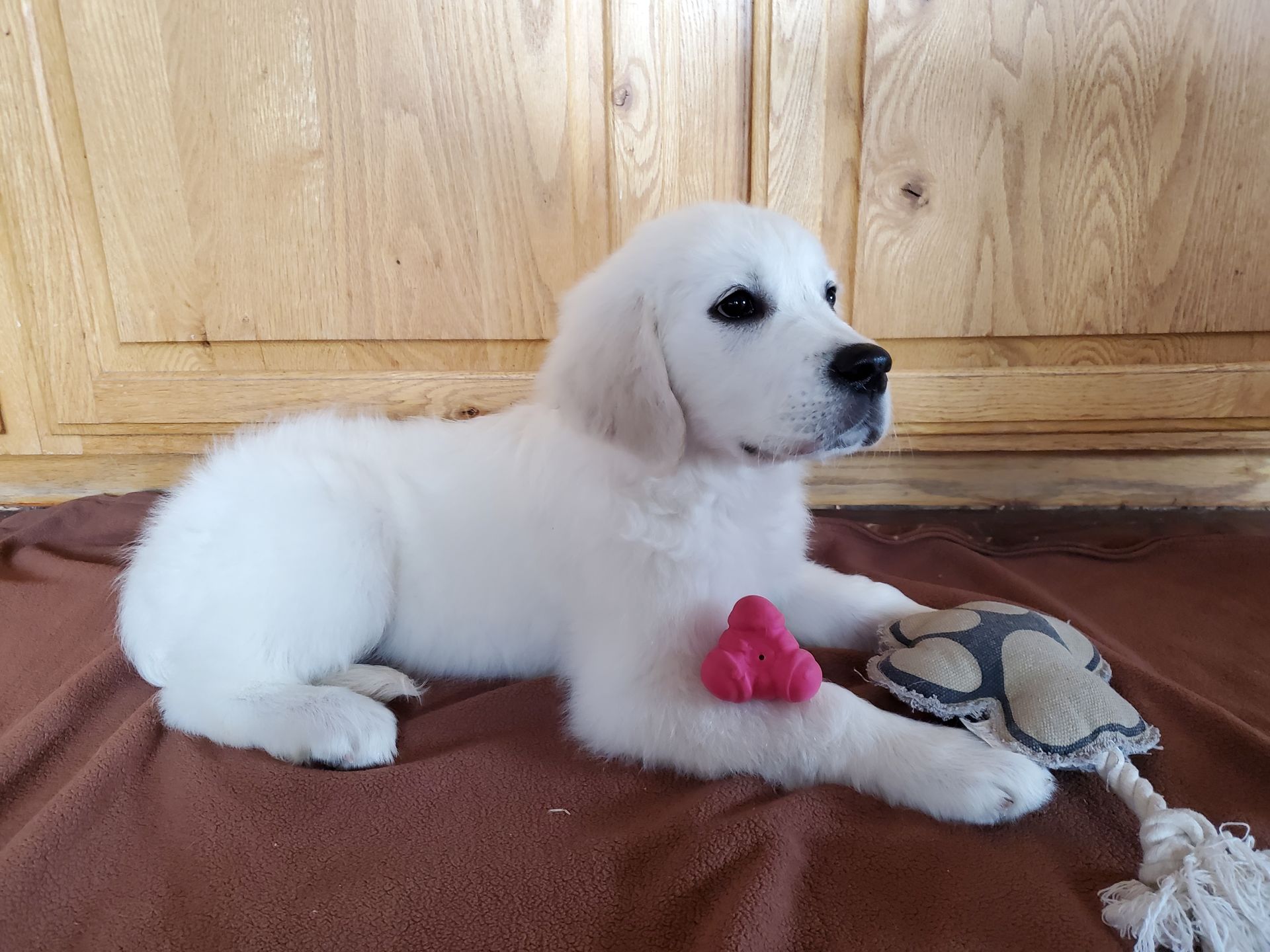Basic Puppy Commands
Basic Dog Commands Every Owner Should Know
Training your dog with basic commands is more than just teaching obedience; it’s an opportunity to bond and build a trusting relationship. A well-trained dog feels happier, more confident, and ready to explore the world safely by your side. Learning these commands will make everyday life easier and more enjoyable for both of you. Plus, did you know that dogs can learn between 150-250 words? With consistent training, your dog can master numerous commands, making you a more connected team.
Here are some essential basic commands to get you started:
1. Come
Purpose:This command is crucial for recall, helping keep your dog safe in various situations.
How to Train: Start by putting your dog on a long leash in a quiet environment. Kneel to your dog’s level and use an enthusiastic, happy voice to call her name followed by the command “come.” You can also clap your hands, make a kissing sound, or use other noises to grab her attention. Make sure your tone is inviting and positive. Hold out a treat or a favorite toy in your hand as an incentive. As soon as your dog comes to you, praise her enthusiastically with words like “yes” and offer the treat or toy. This positive reinforcement makes her excited to come to you next time. Start slow, and increase distance and distractions as she masters this command.
Tip: Always make the “come” command a positive experience. Never scold your dog if she doesn’t come right away—this should always be a rewarding and fun command.
2. Sit
Purpose: A foundational command that helps your dog stay calm and focused, whether greeting people or waiting at a street corner.
How to Train: Stand in front of your dog and hold a treat in your hand, letting her see and smell it. This will grab her attention and keep her focused on you. If your dog is too distracted or excited, give her a moment to settle or take her to a less distracted area. Hold the treat close to her nose and slowly lift it upward and slightly back over her head. As her nose follows the treat, this will cause her to naturally lower her bottom to the ground. This movement encourages her to sit without you having to physically make her sit. As your dog’s bottom begins to lower, say the command “sit” in a clear, upbeat tone. Timing is crucial—saying the word as she’s moving into the position helps her associate the action with the command. The moment your dog’s bottom touches the ground, praise her enthusiastically and give her the treat. As your dog becomes more consistent, start to phase out the lure motion of the treat.
Tip: Practice this command frequently in different settings—indoors, outdoors, and around distractions—to ensure your dog listens no matter where you are.
3. Stay
Purpose: Helps your dog remain in one place, which is useful in a variety of scenarios like waiting at the door, avoiding hazards, or maintaining calm in busy areas.
How to Train:Start with your dog in a sitting or lying down position. Show your dog your palm (like a stop sign) and say “stay.” After giving the “stay” command, take one small step backward. If your dog remains in place, immediately praise her with an enthusiastic “Yes!” and give her a treat. If she moves, calmly guide her back into the original position and try again. Don’t punish or scold—this is all part of the learning process. Once your dog consistently stays when you take a single step back, slowly work up to longer stays and greater distances, always returning to your dog to deliver the treat and praise.
Tip: If your dog breaks the stay, calmly bring her back to the original position and try again. Patience is key; don’t rush the process.
4. Lay Down (Down)
Purpose: A calming command that helps your dog relax, stay safe, and be less reactive in situations where sitting isn’t enough.
How to Train:Start with your dog sitting or standing in front of you. Hold a treat close to your dog’s nose to grab her attention. Slowly lower the treat toward the ground, guiding her down while saying the command “down” in a calm, clear voice. As your dog follows the treat, her body will naturally lower into a lying position. The moment she lies down, immediately reward her with the treat and lots of praise. As she begins to understand the command, gradually reduce the motion of your hand—bringing the treat less toward the floor each time. The goal is to have her respond to the verbal command alone, eventually obeying even when you’re standing upright without bending down.
Tip: you want commands to be your dogs choose. Don’t push your dog down. Practice patience and keep sessions short and positive.
5. Leave It
Purpose:Teaches your dog self-control, which is essential for avoiding dangerous items or things you don’t want them to touch.
How to Train: Hold a treat in your hand and allow your dog to sniff it. As soon as she tries to take it, close your hand and firmly say, “leave it.” Repeat this process until she stops trying to take the treat and briefly looks away. The moment she does, immediately reward her with a different treat from your other hand to reinforce the behavior. Once she consistently leaves the treat in your hand, increase the difficulty by placing the treat on the floor. If she goes for it, cover the treat with your hand while repeating “leave it.” Reward her when she shows self-control and looks away. Use the “leave it” command whenever you want your dog to ignore something, such as food on the ground, other people, distracting smells, or when she loses focus during training. This command teaches your dog self-control and helps you manage her attention effectively.
Tip: Practice in various environments with different temptations to strengthen the command.
6. Watch Me
Purpose: A valuable focus command that helps redirect your dog’s attention to you, especially in distracting environments.
How to Train: Hold a high value treat at your dog’s nose level to capture her attention. Make sure it’s something she loves, like small pieces of chicken, cheese, or a special dog treat. This will keep her motivated and engaged. Slowly raise the treat from your dog’s nose up to your forehead, just between your eyes. As you move the treat, say the command “watch me” or “look.” Your dog’s eyes should naturally follow the treat up to your face. This movement helps guide her focus toward your eyes. The moment your dog makes eye contact with you, immediately praise her enthusiastically and give her the treat. Use positive, upbeat words like “yes.” As your dog becomes consistent, start using the verbal command without moving the treat as much, gradually shifting to just saying “watch me” and rewarding when she looks at you.
Tip: Use this command when you need your dog’s attention quickly, like before crossing a street or during training sessions.
7. Heel
Purpose: Keeps your dog walking beside you rather than pulling on the leash, making walks more enjoyable and safer.
How to Train: Begin training in a distraction-free environment, such as a large room or hallway inside your house. Start by walking backward with your dog facing you, and reward when her head aligns with your side. This helps her understand the correct position.
With a treat in hand, call your dog’s name and point to the side you want her to walk on (traditionally, the left side). As soon as she moves into position beside you, say “yes” and give her the treat. Repeat this step until she consistently moves to your side.
Once your dog is comfortable standing at your side, start walking slowly with a treat in your hand by your side. If she stays beside you, immediately reward her with praise and a treat. Gradually increase the number of steps you take before rewarding, building up your dog’s ability to walk longer distances at heel.
Once your dog reliably heels indoors, take the training outside to your yard. Begin in the starting position, with your dog by your side. If she gets ahead of you or starts to pull, stop, gently guide her back to your side using the leash, and try again. You can also turn around and walk in the opposite direction to regain her attention. Reward her frequently when she stays in the correct position.
After mastering heel in the yard, move on to walking in your neighborhood. Remember, consistency is key. The new environment will be full of tempting distractions like smells, other dogs, and noises, so be patient. If your dog starts pulling ahead to investigate something, stop, guide her back to your side, or change direction to keep her focused on you.
Initial walks may be slow and short, and you might only cover a couple of blocks, but that’s perfectly fine. It’s better to go slowly and reinforce good habits than to let pulling become a pattern. If the neighborhood is too distracting, go back to a quieter area like your yard or a less busy street to reinforce the behavior.
Tip: Reward your dog frequently at the start, gradually reducing treats as she becomes more consistent. Always praise her when she gets it right, reinforcing her efforts and keeping her motivated.
Final Thoughts
Training your dog with these basic commands not only creates a well-behaved pet but also strengthens your bond and communication. Be patient, consistent, and positive in your training approach. Remember, each dog learns at their own pace, so celebrate every small success and enjoy the journey of learning together! Keep expanding your dog's skills by introducing new commands as your confidence and connection grow.
Happy training! 🐾







